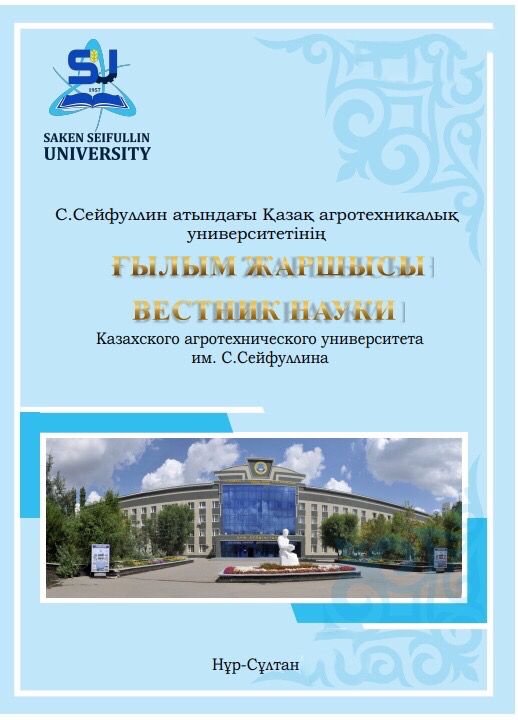STUDY OF INHIBITED MAZE COMPOSITIONS ON ATMOSPHERE RESISTANCE
Keywords:
agricultural machinery, mineral fertilizers, corrosion, conservation compositions, fuel oil, weather resistance, protective properties, corrosion inhibitors, corrosion losses.Abstract
In this work, we studied the protective properties of conservation compounds on the basis of fuel oil in relation to the protection of agricultural equipment for the application of mineral fertilizers from corrosion in the climatic conditions of the West Kazakhstan region. On the basis of the presented average annual climatic factors of the city of Uralsk, projected corrosive losses of carbon steel were determined from 30.8 g / (m2 ∙ year) to 103.2 g / (m2 year). Analysis of the corrosive climatic factors of the West Kazakhstan region shows a high insolation of the atmosphere. The magnitude of insolation in Uralsk for 1 year is 4504 MJ / m2, which contributes to a more intensive destruction of bitumen coatings. Experimental studies on weather resistance were carried out on the basis of standard methods, under the influence of climatic factors at the city of Uralsk. For testing 2 batches of 12 steel plates each 08kp in size 120 x 60 x 3 mm, covered with inhibited fuel oil composition (84% MAZ + 6% black oil Emulgin + 10% mineral spirit) and gasoline-bitumen composition (60% gasoline + 35% bitumen + 5% waste oil) were placed on an outdoor corrosion stand. Inspection lot was uncoated. The research results show that the annual corrosion loss of 08kp steel plates coated with a gasoline-bitumen composition is 7.0 g / m2, covered with an inhibited fuel oil composition of is 2.14 g / m2. Annual losses of unprotected 08kp steel in the conditions of the city of Uralsk amounted to 113 g / m2, which is 8.7% different from the predicted metal
loss. At cost, the proposed composition is cheaper than the gasoline-bitumen composition by 1.3 times, while it protects carbon sprays of spreaders from atmospheric corrosion for 12 months, reducing corrosion losses by 52 times.

